Aero at Unbound? Hannah Shell’s Tested-Fast Cervelo Aspero-5

After last year’s nine-woman sprint for the win at Unbound Gravel, Hannah Shell knows full well that the elite competitors at this year’s race will be pulling out all the stops when it comes to equipment and performance. With that in mind, when it came to her set up for this year’s race, Shell enlisted the help of Marc Graveline to dial in her ride for tomorrow’s race. Graveline is the man behind a new aero testing device called “The Gizmo” and we caught up with the two for some of their aero testing and you can see how the process worked in the video below.
We asked Graveline for more details on The Gizmo and aero testing in general:
Slowtwitch: What are the advantages of using a device like the Gizmo compared to a wind tunnel or other aero testing options?
Marc Graveline: There are several tools to help measure aero : wind tunnels, velodromes, CFD (Computation fluid dynamics) and road sensors. For completeness you can also apply techniques like the Chung Method without devices.
Each has its advantages and disadvantages. The main advantage of road sensors is they are testing in the real world. Tunnels are great, but often people do not hold the same position in a tunnel and road. Velodromes work well, but not everyone rides the banks the same, and a black line does not exist on the road. CFD is an extremely useful tool, but I personally find it more complementary to other techniques rather than a stand-alone tool.
The bottom-line is simple – no matter what tool you use, you should confirm your findings on the road because that is where you race.
You’ve been involved in the aero measurement world for a while – what are the big changes you are seeing in the space right now?
I wouldn’t say it’s evolved leaps and bounds. I have tested most solutions out there and, while I believe minor things have improved, the devices are still not for everyone. And that is what we see as the big prize. Make it available to more people. Maybe not everyone, but many more. This is both from a cost and useability perspective.
How much of a difference can something like this make for athletes in the different disciplines? Triathlon? Road Cycling? Gravel? Is there a place for this in the MTB world?
It’s big for all disciplines. We often see 20+ watt savings when we do an aero session with an age-group athlete. This is usually a combination of clothing, helmets and, most importantly, position.
But we use it at the World Tour level to find single-digit watt savings on tires, and double digit savings on positions. World Tour riders have 2 or 3 positions they have in their toolbox depending on the conditions. Gravel riders are discovering they can use the tech to optimize tires for double-digit watt savings. I have never worked with MTBers, but we can measure so many things – the phrase “you can only improve what you measure” comes to mind.
How accurate is the Gizmo device?
You end up talking about precision vs accuracy. Accuracy will help you get an absolute CDA number. Good precision will help you determine if configuration A is faster than configuration B. Road-based aero devices do really well on the precision side, although you can get very accurate numbers by picking the right protocols.
What makes the Gizmo different from other CDA measurement devices out there right now?
There are many features we included in the Gizmo that others have not. I attribute some of this to the thousands of tests we have done on the road. We measure many more things that allow us to get better accuracy (e.g. road inclination) and measure other parameters impacting performance – vibration, for example.
You’ve done testing with elite triathletes and world tour teams. How important is something like this for age-group competitors?
Let’s go back to how I got into this. I was an age group triathlete and realized that I needed to be smart, not just fit. Age groupers put a lot of time and effort into their training. They want maximum return on their investment (time and dollars). If you never look at the clock, it’s probably not for you. But, if you want to compete for a Kona Qualifying slot, a 70.3 World Championship spot, or a PB and being “smart” is a tool you want to exploit, it’s for you.
Set up seems to be the biggest challenge for all these devices. Why are they so complicated to get up and rolling?
They were extremely complicated, still somewhat complicated, but the goal is to make it dead simple. This is why I believe, for many people, it’s best to work with an aero tester that masters these devices. Slowtwitch members like Brian (Desert Dude) or Jeroen (Tripro) can help you here.
But there are things coming that will make this even more accessible.
We saw you doing some testing with Hannah Shell on gravel – how can something like the Gizmo help a gravel athlete?
The device can be used to measure the aero component of a gravel rider. We found significant watts here. But we were also able to measure rolling resistance and the impact of tire types, pressures and other parameters that are very significant for gravel. Rolling resistance is a huge component in gravel, significantly bigger than tri.
Where do you see a device like the Gizmo going in the future – what’s the end goal for you?
I have mixed feelings on this one. I would love to see the tech eventually built into bikes. There may be opportunities there. Not just in the frame, but in accessories all over the bike.
But I would also love to see an OpenSource community that could contribute to the evolution of the tech. There are much smarter people out there that could make a big contribution.
The End Result
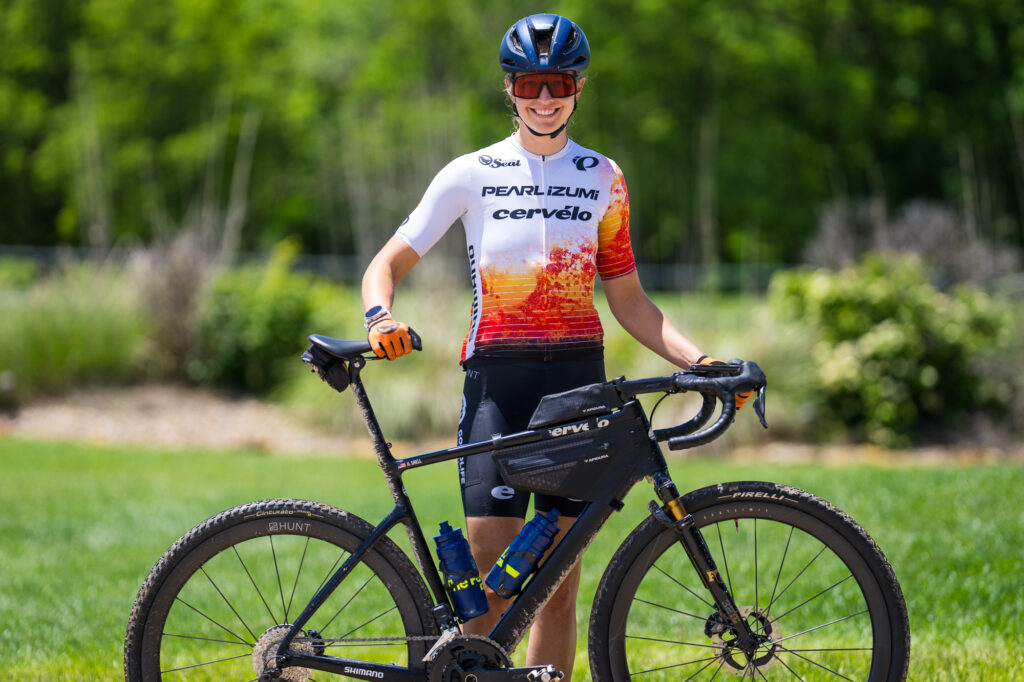
We caught up with Shell after she finished a reconnaissance ride (hence the gravel and mud on the bike!) to see the end result of her testing process with Graveline. Here’s how she’s set up her Cevelo Aspero-5.
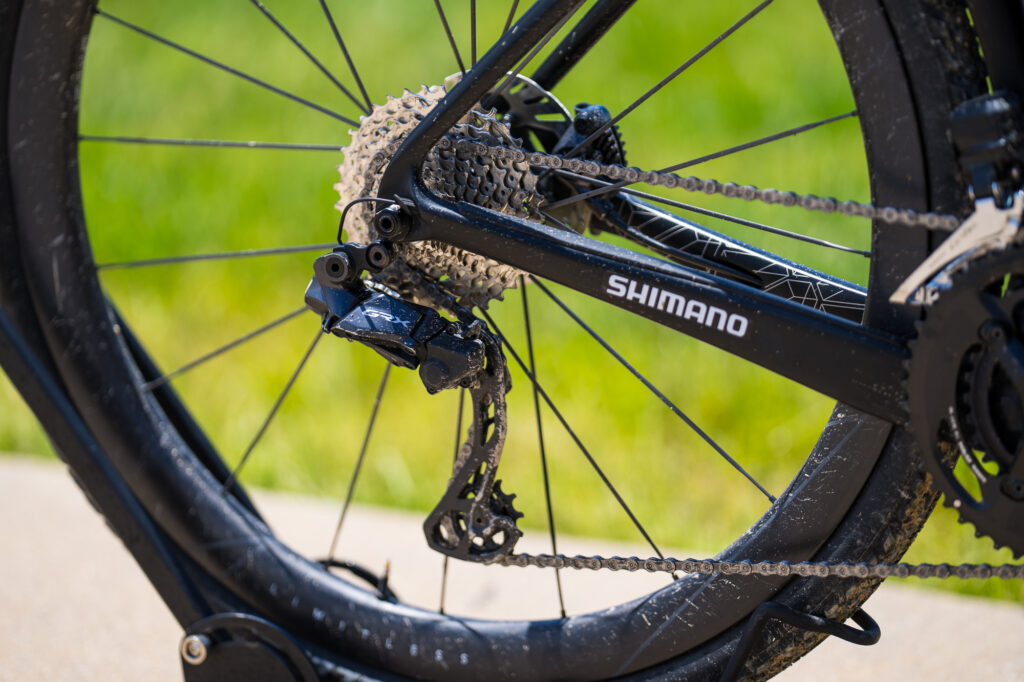
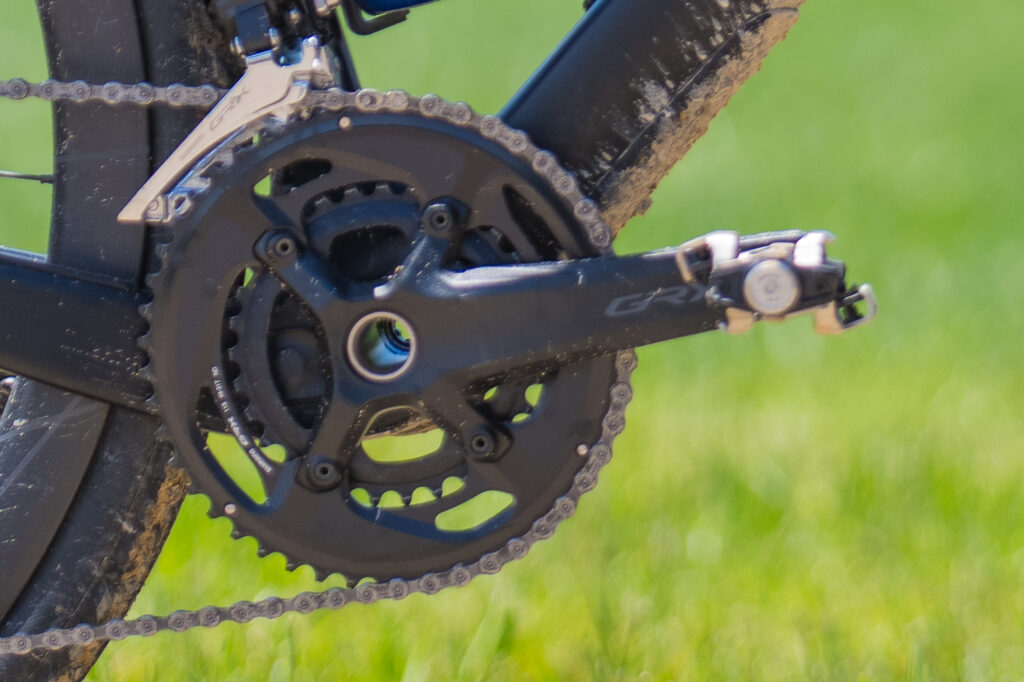
Shell is riding Shimano’s GRX 12-speed Di2 Gruppo with a 31/48 chainring and an 11-36 cassette. She’s using the Garmin Cycling Rally XC 200 power pedals and keeps track of all the data with Garmin’s 1040 Solar bike computer.
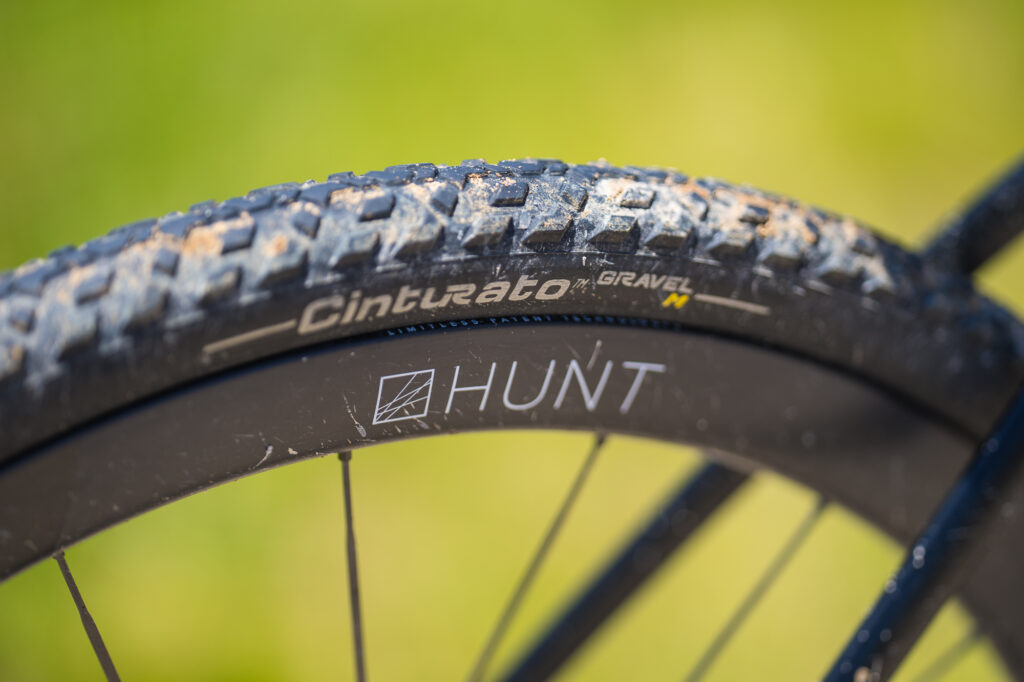
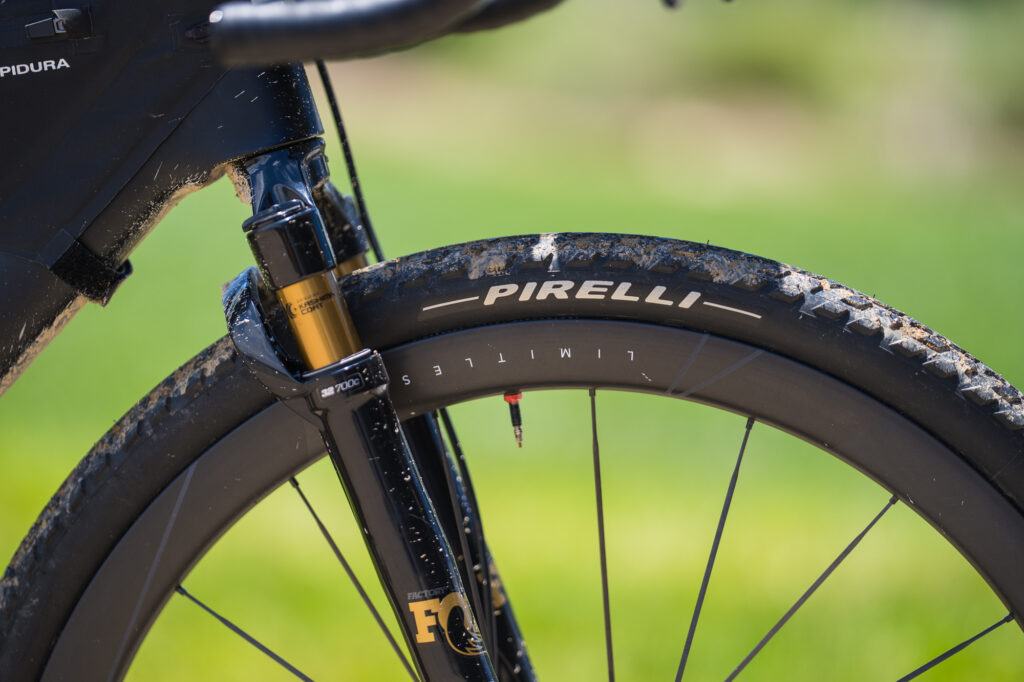
Shell is riding Hunt Limitless 40 Carbon Spoke Gravel wheels with a Pirelli Cinturato 45 mm Gravel M tire on the front and a 40 mm Gravel M on the rear. After lots of testing Shell figured out that the optimal tire pressure is 20 in the front and 25 for the rear.
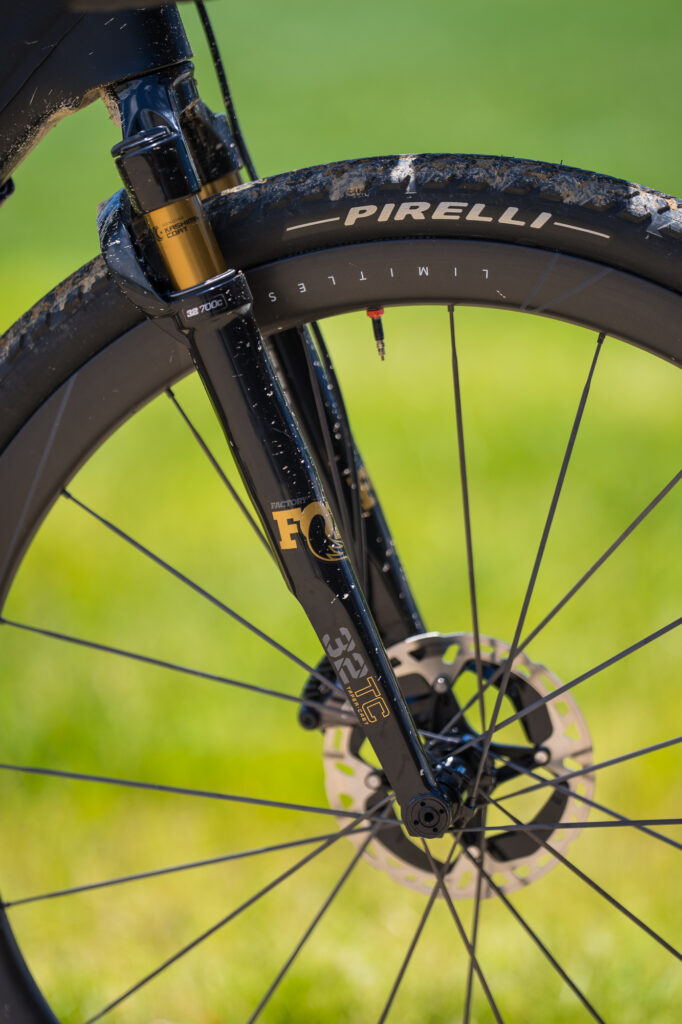
Shell’s bike is armed with the Fox Taper Cast 32 Suspension fork with 40 mm of travel.
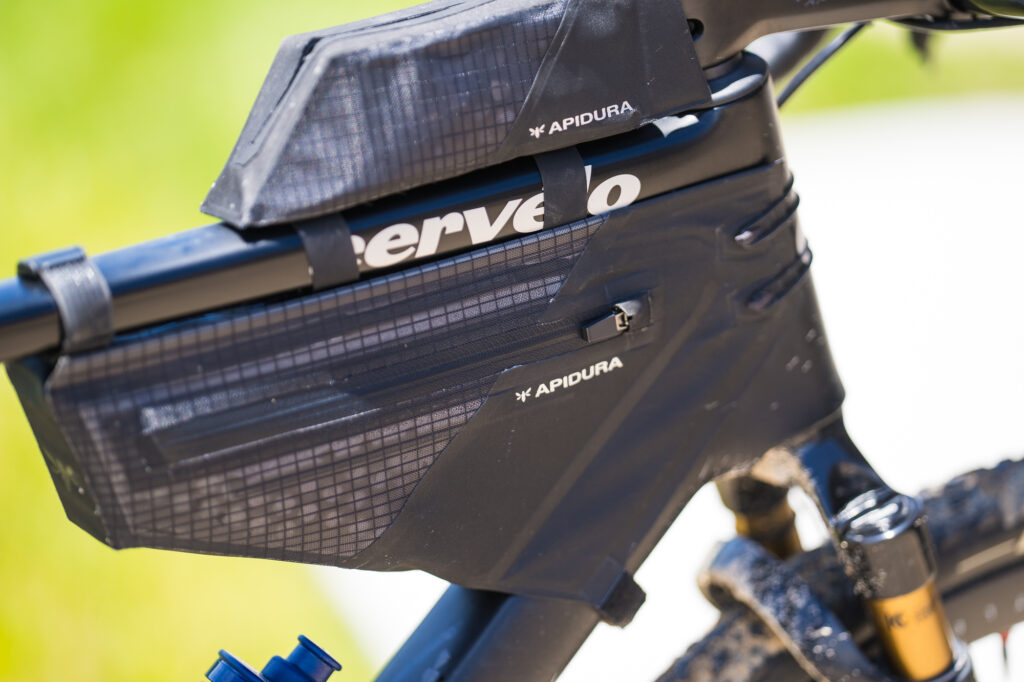
Shell is using an Apidura prototype aero frame bag system.




Thanks Kevin,
One of the interesting results of this testing was the impact of the suspension fork.
There seems big trend in the gravel world to go to super wide mountain tires. She put the suspension fork on one bike and the rigid fork on the other. We tested about 9 or 10 tires with ‘the best’ different depending on the fork.
At the end of the day a specific gravel tire with suspension fork was faster than a MTB tire. But remove the suspension fork and the winner would flip.
In tri we obsess about aero. These folks need to obsess about rolling resistance. Gotta sneak a new gravel bike in the house……this stuff is fun.
Wait–did I hear about this on the Performance Process? I listened to this episode as I drove from my hotel in Ottawa back to the KC airport to retrieve my luggage from its holiday in Dallas. It was engaging and interesting and timely.
Yes you did. There’s been a bit of Escape/Slowtwitch overlap lately which I love to see.
Ya, that was me.
I feel bad for Hannah, slicing her tire after 40 miles.
I got a note from her this morning that she was faster on less watts than last year, so she is really anxious to race.
I’m the other side of the pond and don’t ride gravel so I don’t really know what I’m talking about but following along from the cheap seats it seems like the MTB tyre advantage comes with the proviso that the MTB tyres are only faster than gravel tyres when normalised for puncture protection. ie you can run a thinner, faster casing on an MTB tyre without increasing your puncture risk too much. But do that on a gravel tyre and maybe you slice a tyre after 40 miles?
The slice was the result of a crash not simple riding.